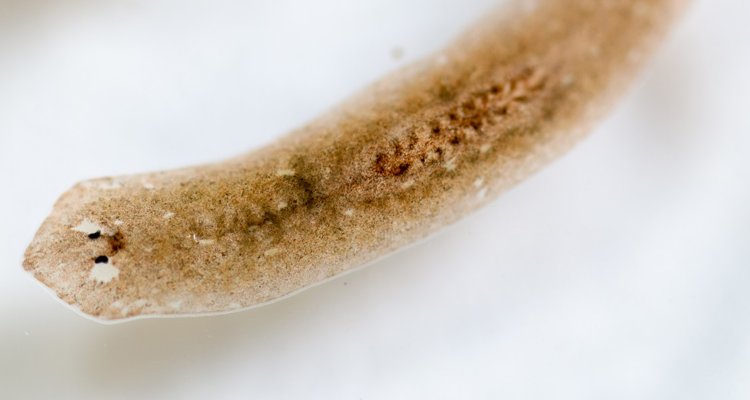
Showcase
The secret of the indestructible flatworm
It’s almost impossible to kill a flatworm. Cut the Schmidtea mediterranea in half, and it still won’t die. The head piece will grow a new tail, and the tail will grow a new head. A week later, you have two worms. Researchers at the Experimental Zoology Group in Wageningen are trying to unravel the secrets of these remarkable creatures.
Many doctors and scientists dream of being able to grow a new and functional kidney, heart or liver from a patient’s stem cells. Stem cells produce all the other cells in our bodies. While stem cells organise themselves to generate all body parts during the development of a baby, adults cannot even regrow a missing fingertip. Adult stem cells behave very differently to their embryonic counterparts and for example are committed to distinct types of cells: blood stem cells make our blood, and stem cells in the skin make new skin cells. “Flatworms, in contrast, have a lot of versatile stem cells, which can become any type of flatworm cell,” says assistant professor Steffen Werner. “Thus, flatworms can endlessly regenerate themselves and in principle live forever unless they get sick or don’t find enough food. There are even species that reproduce by splitting themselves. What’s the secret of these creatures: how do the stem cells get to the wound, and how do they know what they’re supposed to become?”
There are even species that reproduce by splitting themselves
Secrets of the flatworm
The lab is full of containers of flatworms that are destined to help unravel these secrets. The researchers dissect the worms and selectively label the cells so they can see what part of the body they are in. “We know genes that are only active in stem cells or in the cells which arise from these stem cells. We can add a molecule that only binds to the RNA of such a gene and then emits a fluorescent light if we aim a laser beam at it. Because this RNA is found only in specific cells, we can clearly see them glowing when observed under the microscope.”
But the researchers can only label cells in dead worms and therefore cannot track the movements of the stem cells within a worm. That’s why they simulate various movement strategies in a computer, using what’s known as a Cellular Potts model. “The wound site probably releases a signal that the stem cells can sense,” says Werner. “It’s comparable to picking up the scent of freshly baked bread. You turn your head left and right to find out if the scent is stronger in one direction. If you can’t smell any difference, you could set off in any random direction. If the smell gets stronger, you carry on, and if not, you turn around. You can also observe and mimic the behaviour of other people around you. We’re simulating how the stem cells might be interpreting the wound signals: e.g. by detecting differences in the signal strength between locations, by randomly exploring, and/or by communicating with other cells.”
The researchers are comparing the simulations at different points in time with what they observe in the worms in the lab. “We’ll come away with a better understanding of how flatworms regenerate themselves and regrow their organs. We hope that in the future this information will help scientists grow entire human organs from stem cells.”
Worm stem cells travel vast distances
Flatworm stem cells are found all over the worm’s body. But they do have to travel long distances to get to the wound. The stem cell is about one micrometre in length and it has to travel a distance 1,000 to 10,000 times greater than that. “The cells need to interpret differences in the wound signal, which are likely very weak over such a great distance,” says Werner. “And yet the stem cells still manage to get there.”